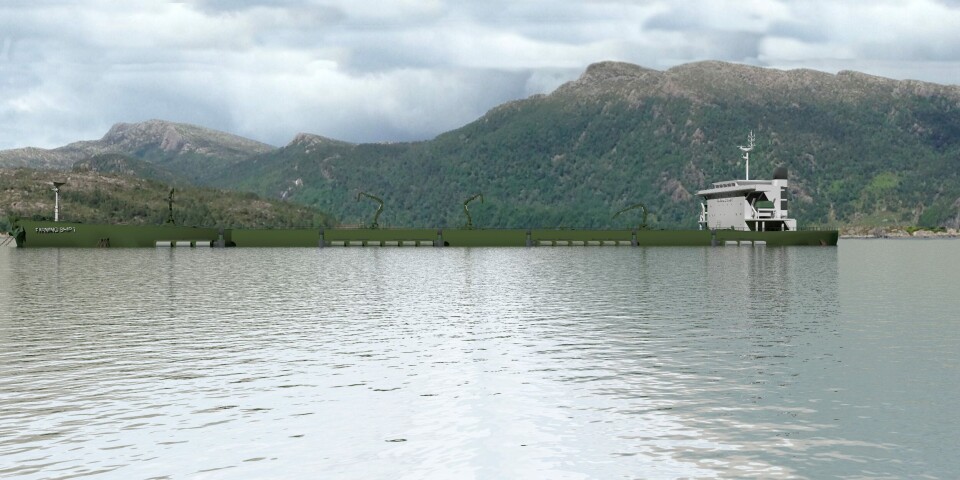
Cargo ship conversion
Marine Harvest’s latest development licence application involves converting a former cargo ship into a 6-cage salmon farm.
The company has applied for six licences using this method, which would involve building cages in each of the six tanks of a Panamax ship, while the remaining space could be used to store feed and other necessary equipment.
Each tank would have a volume of about 65,000 cubic metres, giving each ship a capacity of about 950,000 fish, distributed across the six cages.
“Fish farming in converted cargo ships could be the solution to several of the challenges currently facing the industry, like escaped fish and salmon lice infestations. At the same time, the investment costs are reasonable,” says Marine Harvest CEO Alf-Helge Aarskog.
Because the basic construction does not have to be built from scratch, the repurposing of existing ships could bring the investment cost down, compared with other closed containment solutions.
Easy to establish
“The ships have already been designed to handle a maritime environment, and we know that both the ships and their construction will withstand the external forces such a facility will be subjected to. Since we are also planning to reuse the basic structure, the technology will also be quick to implement,” says Aarskog.
“We will begin with trial production in two of the ship’s tanks. Based on the experience we gain from this pilot, we will then make the necessary modifications to the ship before transferring fish to all the tanks,” Aarskog explains.
Environmental benefits
The company believes that fish farming aboard ship affords numerous environmental benefits, in addition to those deriving from the reuse of existing constructions and solutions.
“For example, we are going to collect the salmon’s nutrient-rich excrement so that it can be used for other purposes. In addition to which, the solution is almost guaranteed to be escape-proof and lice free,” adds the CEO.
Onshore links
Most of the ship’s technical equipment that is not being used for fish production will be dismantled or mothballed - the main engine will be shut down and the oil drained off, while all the fuel tanks will be emptied. Marine Harvest also wants to supply the ship with onshore electrical power, to make the production of food as climate-friendly as possible.
The intention is to position the ship in an area designated for aquaculture in the vicinity of Florø in Sogn og Fjordane, where it will be adapted and painted to make it blend into its surroundings.























































